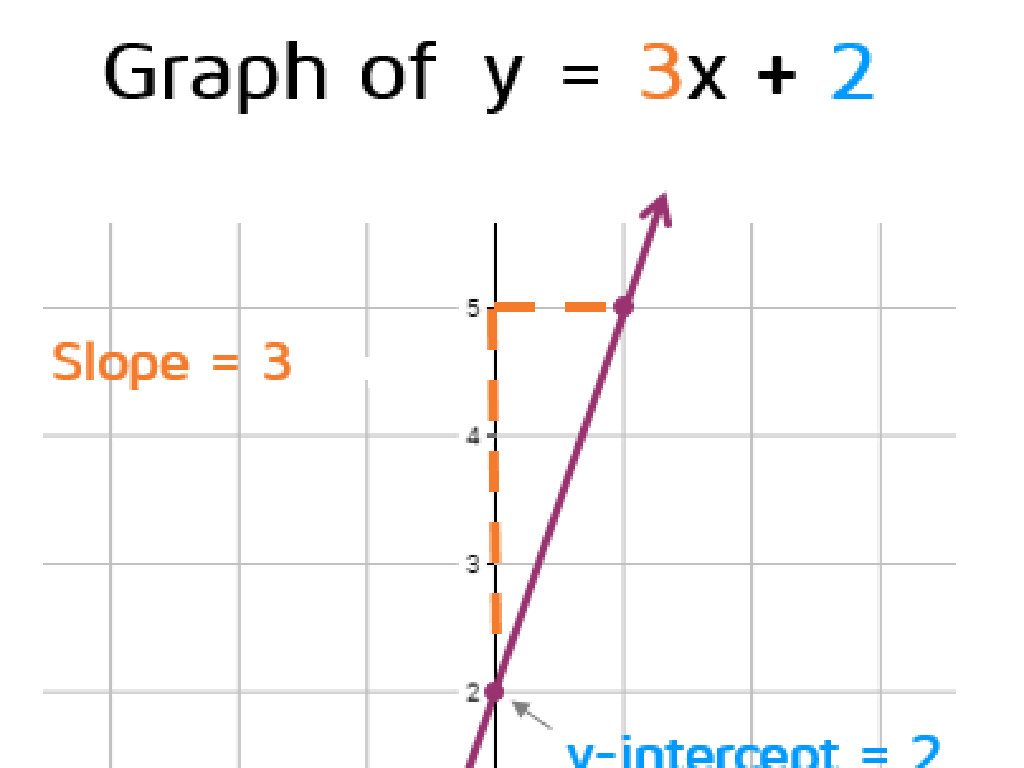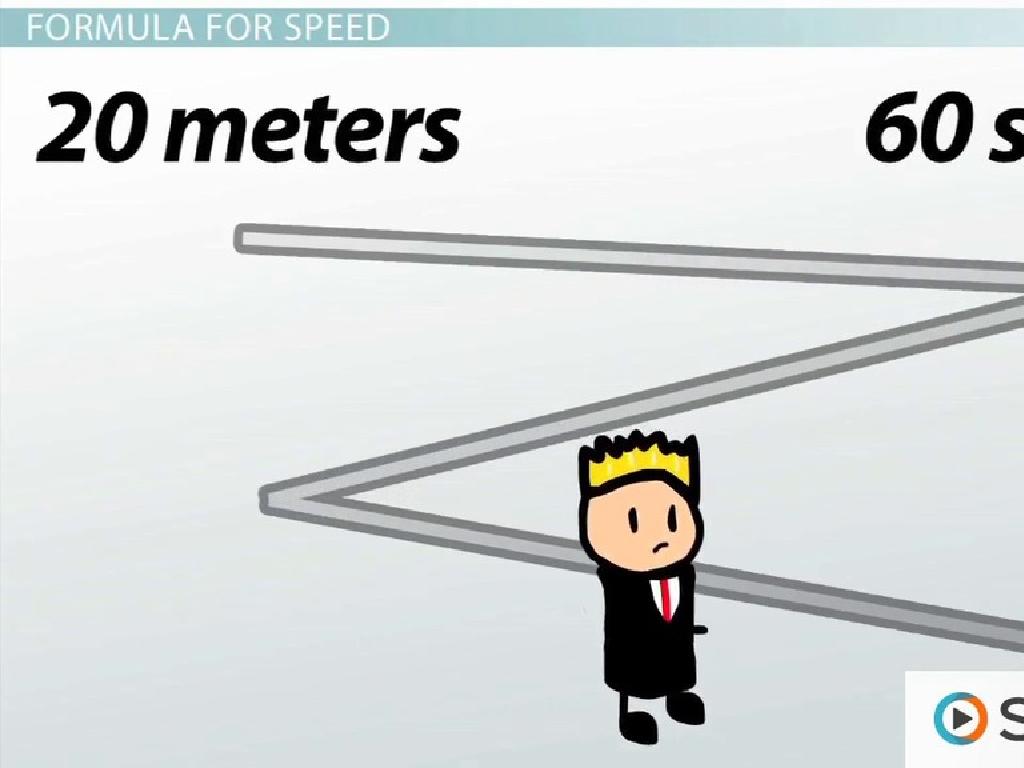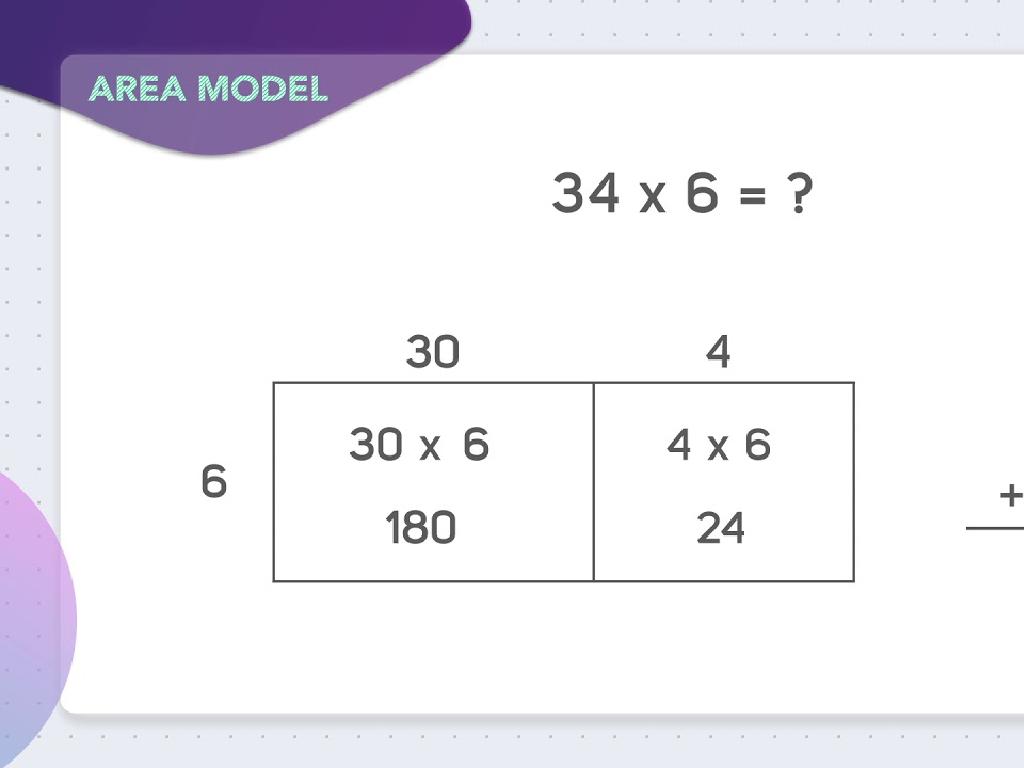Compare Fractions Using Benchmarks
Subject: Math
Grade: Fourth grade
Topic: Compare And Order Fractions
Please LOG IN to download the presentation. Access is available to registered users only.
View More Content
Today’s Adventure: Comparing Fractions!
– Fractions represent parts of a whole
– Like pieces of a pie or a pizza slice
– Comparing fractions helps us order them
– Knowing which is larger or smaller
– Benchmarks: 0, 1/2, and 1
– Use these to estimate where fractions fit
– Practice with common denominators
– Find equivalent fractions to compare
|
Begin the lesson by explaining that fractions are a way to represent parts of a whole, using the analogy of a pie or a pizza to make it relatable for fourth graders. Emphasize the importance of comparing fractions in everyday life, such as determining who has more pizza. Introduce benchmarks of 0, 1/2, and 1 as reference points to estimate the size of fractions. Teach students how to compare fractions with different denominators by finding a common denominator. Provide examples and encourage students to practice with fractions that are less than, equal to, or greater than these benchmarks. This foundational understanding will help them with more complex math concepts in the future.
Understanding Benchmarks in Fractions
– What is a benchmark fraction?
– A standard or point of reference in measuring or judging quantity
– Meet our fraction friends: 0, 1/2, 1
– These are key reference points to help us understand other fractions
– Using benchmarks to compare
– Compare fractions by deciding if they are less, equal, or more than benchmark fractions
– Benchmarks in daily life
– Examples: Half a pizza, a whole cake, or no cookies left
|
Introduce the concept of benchmark fractions by explaining that benchmarks are standard points we use to compare other quantities. Emphasize the importance of 0, 1/2, and 1 as key reference points. Demonstrate how to use these benchmarks to decide if other fractions are smaller, equal to, or larger than them. Provide relatable examples such as portions of food to illustrate the concept. Encourage students to think of other examples where they naturally use benchmark fractions in their daily lives.
Comparing Fractions to Benchmarks
– Is it bigger or smaller than 1/2?
– Compare fractions to see if they are more or less than 1/2
– Using benchmarks to estimate
– Benchmarks like 0, 1/2, and 1 help estimate fraction size
– Practice with 1/3 and 2/3 vs 1/2
– Which is closer to 1/2: 1/3 or 2/3? Why?
– Understanding benchmarks
|
This slide introduces students to the concept of using benchmarks, such as 1/2, to compare fractions. Start by asking students if a fraction is bigger or smaller than 1/2 to gauge their initial understanding. Explain that benchmarks are standard points of reference that can be used to estimate the size of different fractions. For practice, use 1/3 and 2/3 to teach students how to determine which fraction is closer to the benchmark of 1/2. This will help them visualize and better understand the concept of comparing fractions. Encourage students to think of other fractions and compare them to the benchmark of 1/2 to reinforce the concept.
Using Benchmarks to Compare Fractions
– Place fractions on a number line
– Visualize fractions to see their size relative to each other
– Determine which side of 1/2 a fraction falls
– If a fraction is greater than 1/2, it’s on the right; if less, on the left
– Compare fractions with different numerators and denominators
– Use benchmarks like 0, 1/2, and 1 to decide which is larger
– Practice with examples
– Example: Which is larger, 3/4 or 2/5? Let’s find out using a number line!
|
This slide introduces students to the concept of comparing fractions by using benchmarks and a number line. Start by explaining how to place fractions on a number line and use 1/2 as a reference point to determine if a fraction is greater or less than 1/2. Then, guide students on how to compare fractions with different numerators and denominators by using 0, 1/2, and 1 as benchmarks. Provide examples and encourage students to practice by placing fractions on a number line and comparing them. This visual approach helps students understand the relative size of fractions and is a fundamental skill in understanding fraction concepts.
Let’s Practice Together: Comparing Fractions
– Compare 3/8 and 4/8
– Which fraction is larger, 3/8 or 4/8? Think about the pieces of a pie.
– Is 5/8 closer to 1/2 or 1?
– Decide if 5/8 is more than halfway full or nearly full.
– Group activity on benchmarks
– Use 0, 1/2, and 1 as benchmarks to compare fractions.
– Discuss our findings
|
This slide is designed for a collaborative classroom activity. Start by guiding students through the comparison of 3/8 and 4/8, highlighting that since the denominators are the same, the fraction with the larger numerator is greater. Next, ask students to consider if 5/8 is closer to 1/2 or 1, reinforcing the concept of benchmarks. For the group activity, divide the class into small groups and provide them with various fractions to compare using 0, 1/2, and 1 as reference points. Encourage discussion and reasoning among group members. After the activity, regroup and discuss the findings as a class, allowing students to explain their thought processes and solidify their understanding of comparing fractions with benchmarks.
Class Activity: Fraction Scavenger Hunt
– Find objects to represent fractions
– Use 0, 1/2, and 1 as benchmarks
– Is the fraction less than, equal to, or more than 1/2?
– Compare your fractions
– Which is larger? Use benchmarks to decide.
– Present findings to the class
– Share what you found and how you compared.
|
This interactive activity is designed to help students understand fractions by finding real-world objects that represent different fractions. Students will use benchmarks of 0, 1/2, and 1 to compare the sizes of the fractions they find. Encourage them to think about whether their fraction is closer to 0, 1/2, or 1 to determine its size. After the scavenger hunt, students will present their objects and explain how they used benchmarks to compare their fractions. For the teacher: Prepare a list of possible objects students can find, ensure they understand how to use benchmarks, and guide them on how to present their findings effectively.
Conclusion & Reflection: Comparing Fractions
– Recap on comparing fractions
– We learned how to use benchmarks like 1/2 to compare fractions.
– Importance of fraction comparison
– Comparing fractions helps in making fair decisions and understanding portions.
– Share a personal discovery
– Think of one new thing you learned about fractions today.
– Reflect on today’s learning
|
As we wrap up today’s lesson, let’s reflect on the importance of comparing fractions. Understanding how to use benchmarks like 1/2, 1/4, or 3/4 to determine which fraction is larger or smaller is a valuable skill in everyday life. It helps us make fair decisions, divide things equally, and understand recipes or measurements. Encourage each student to share one thing they discovered, whether it’s a new strategy for comparing fractions or an interesting fact. This reflection helps solidify their learning and allows them to appreciate the practical applications of math in their daily lives.






